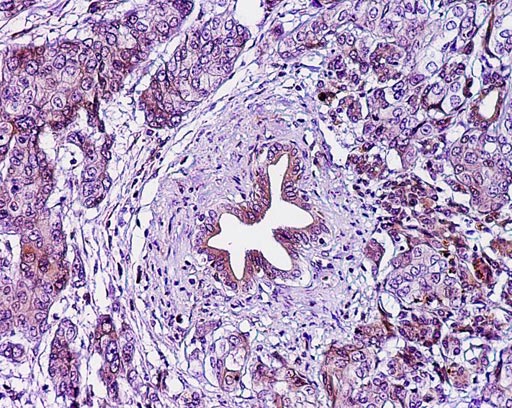Blood Protein Test May Provide Early Cancer Detection
By LabMedica International staff writers
Posted on 24 Jul 2017
A rapid immunoassay for biomarkers that identify pancreatic cancer early enough for effective treatment is based on pair of proteins in the blood.Posted on 24 Jul 2017
The two proteins are the newly identified thrombospondin-2 (THBS2) and the known later-stage biomarker CA19-9 (cancer antigen 19-9).

Image: A photomicrograph of pancreatic ductal adenocarcinoma (Photo courtesy of the Zaret Laboratory, University of Pennsylvania).
Investigators at the University of Pennsylvania School of Medicine (Philadelphia, USA) used advanced stem cell techniques to create a cell line from a patient with advanced pancreatic ductal adenocarcinoma (PDAC). These pancreatic cancer stem cells progressed in culture to an early cancerous state while secreting blood biomarkers of the early-stages of the disease along the way.
The most promising biomarker protein, THBS2, was screened in an optimized enzyme-linked immunosorbent assay (ELISA) against 746 cancer and control human plasma samples in a multiphase study.
A phase one discovery study, a phase 2a validation study, and a second phase 2b validation study revealed that concentrations of plasma THBS2 discriminated among all stages of PDAC consistently. The plasma concentration of THBS2 was able to discriminate resectable stage I cancer as readily as stage III/IV PDAC tumors. THBS2 plasma concentrations combined with those for CA19-9, a previously identified PDAC marker, yielded a c-statistic of 0.96 in the phase 2a study and 0.97 in the phase 2b study. THBS2 data improved the ability of CA19-9 to distinguish PDAC from pancreatitis. With a specificity of 98%, the combination of THBS2 and CA19-9 yielded a sensitivity of 87% for PDAC in the phase 2b study. Thus, a THBS2 and CA19-9 blood marker panel measured with a conventional ELISA may improve the detection of patients at high risk for PDAC.
"Starting with our cell model that mimics human pancreatic cancer progression, we identified released proteins, then tested and validated a subset of these proteins as potential plasma biomarkers of this cancer," said senior author Dr. Kenneth Zaret, professor of cell and developmental biology at the University of Pennsylvania School of Medicine. "Positive results for THBS2 or CA19-9 concentrations in the blood consistently and correctly identified all stages of the cancer. Notably, THBS2 concentrations combined with CA19-9 identified early stages better than any other known method."
The study was published in the July 12, 2017, online edition of the journal Science Translational Medicine.
Related Links:
University of Pennsylvania School of Medicine




 assay.jpg)









